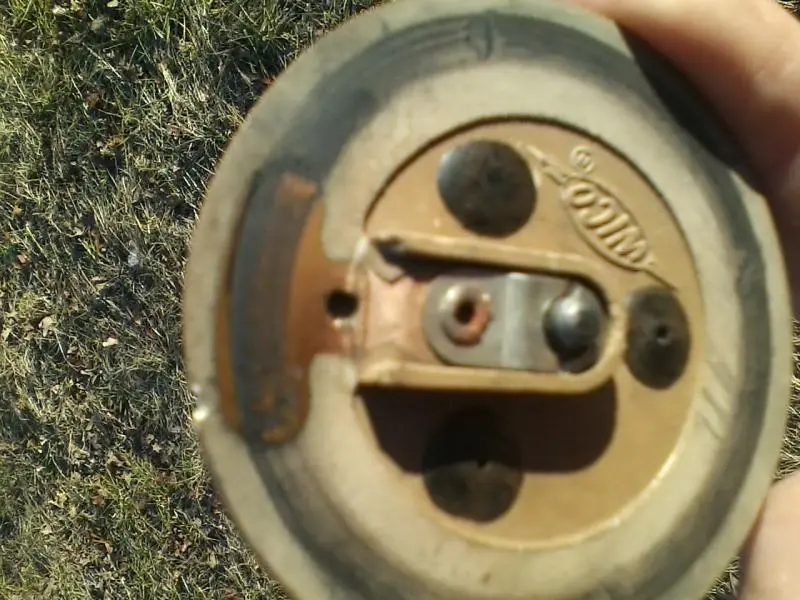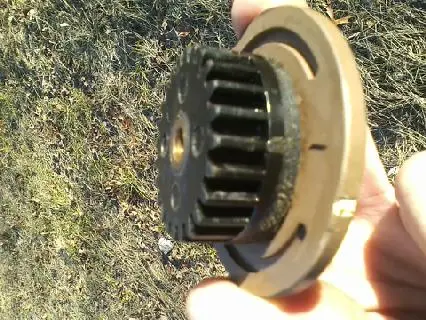

that pony is an oddfire engine meaning that cylinder number two fires right after cylinder number 1 does, then they both cycle through their respective exhaust and intake, compression strokes before firing again, very similar to the old 2 cylinder john deere tractors.
to get it close, remove the spark plug on cylinder number one, (i believe it is the cylinder that is closest to the front of the tractor, someone correct me if i'm wrong) with a finger over the hole, roll the engine over slowly until you feel the compression trying to push your finger off the hole. this will indicate the compression stroke. if you have an impulse coupler on your mag, the rotor may stop turning. you need to get cylinder number 1 at top dead centre. i use a piece of stiff wire or a small straight screwdriver. i put the wire or screwdriver in the hole and continue to roll the engine over until the wire or screwdriver stops rising. be carefull that nothing jams or falls cockeyed in the hole and causes an issue. once you find TDC, check your magneto. if the impulse coupler hasn't clicked then roll the engine a little bit more until it clicks. if the magneto has clicked, and you are still on TDC, install the rotor so it is pointing at the electrode in the cap for cylinder number one. make sure that the direction of rotation for your mag has the next electrode inside the cap as number two cylinder.
Thank you for the information. I will see if I can get it going. I just now got to the computer so I didn't get your reply until now but I left the cap off today for a few hours to make sure it was good and dry as the weather was good today. I noticed the gear that drives the rotor has two teeth that are shaped different on the outer edge than others. After timing the rotor using your method it will be interesting to see if those two teeth line up with the white or black marks on the rotor.
Dozer up and running! Could not get any spark at the plugs or points today so I got on the phone and was able to track down the man who worked on the mag before I owned this machine. He told me that you will not always see a spark at the points and to see if it would arc to a grounded screwdriver at the button on the coil. Tried that and still had no fire there so I pulled points off and cleaned them up better than what we previously had while they were still mounted in position. After a good cleaning we had a good arc from the screwdriver to the coil but still could not see anything at the points. As for the timing of the rotor he said to put the two beveled teeth on the gear at 12 and the mark made with the marker at 6 and we would be good to go. That mark made with the marker lines up with a raised spot on one tooth on the rotor that you can see in the picture. Got everything as he said and gave it a try. Fired right up!
Great to hear you got it running and also good to see your follow up letting us know what the problem turned out to be. So many times when things get going folks forget to post the end results. We all learn from other folks issues.
If there is much of any spark at the points, it indicates a bad condenser. Points are not supposed to arc.
interesting....I have always judged the condition of the condencer by the color of the spark at the points...white or yellowish spark ment it was going south....nice bright blue spark means good condition. spark at the points to me has always ment they were working....
Pretty good description of the function of the condenser/capacitor in a magneto ignition here.
http://www.brightsparkmagnetos.com/faqs/FAQs%20about%20magneto%20condensers%20in%20particular/What%20does%20the%20condenser%20do%20in%20a%20magneto.htm
Most condensers aren't perfect, so there can be a little spark showing at the points without a problem, but shouldn't be much...cuts down on point life.
A friend that runs a magneto & electrical shop says about half of the new condensers he gets nowadays are bad right out of the box-(good ol' Chinese quality...)
Bad how? Do they not function at all or is it that they won't make the microfarad rating? It's pretty easy to check the low mf rating units if you have a multi-meter with that function.